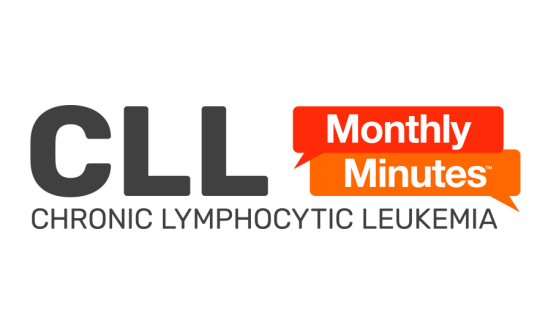Over the past several years, treatment options for chronic lymphocytic leukemia (CLL) have increased at a rapid pace.1 Due to revolutionary treatments called targeted therapies, nearly 87% of patients with CLL are estimated to survive ≥5 years after diagnosis—a percentage that has been growing higher each year.1
Unlike traditional chemotherapy, which simply kills cells that are rapidly dividing, targeted therapies take advantage of our increased understanding of cancer biology, directly targeting the molecules that cancer needs to grow.2 By targeting the cancer cells more directly, researchers had anticipated that targeted therapies would be less toxic than traditional chemotherapy drugs.2 While true in many cases, it should be noted that targeted therapies can still have substantial side effects.2,3
Currently, most patients with CLL in the United States who meet the criteria for treatment receive targeted therapies as first-line therapy.3 These therapies either block signals that CLL needs to grow—such as the Bruton’s tyrosine kinase (BTK) protein inhibitors ibrutinib and acalabrutinib—or they target molecules that prevent CLL cells from sensing signals telling them to die—such as the BCL-2 protein inhibitor venetoclax.1,3
Although these drugs have been used to treat CLL since ibrutinib was first approved by the US Food and Drug Administration in 2014 (venetoclax was approved in 2016 and acalabrutinib in 2019), questions remain about the order in which the medications should be used, which combinations should be used, and what is the optimal duration of treatment.1
Ibrutinib, the first approved targeted therapy, has the most data supporting its use in treating CLL.1 In the phase 3 RESONATE-2 trial, which recently reported 7-year follow-up data, ibrutinib was more effective at preventing CLL progression or patient death when compared with a single chemotherapy, chlorambucil.4 In fact, after 6.5 years of treatment, 61% of patients who received ibrutinib in RESONATE-2 were still alive with no disease progression compared with 9% of those who were treated with chlorambucil.4
Further studies demonstrated that ibrutinib alone, or combined with the immunotherapy rituximab were superior to chemoimmunotherapies (therapies that combine chemotherapy and immunotherapy) in patients with previously untreated CLL.1 These results helped to change the way oncologists prescribed ibrutinib because previously, chemoimmunotherapy regimens such as fludarabine, cyclophosphamide, and rituximab (known by its abbreviation, FCR) had been considered standard first-line treatment for patients with CLL.1,3
Ibrutinib use is not without its risks however, as it has some unique side effects compared with chemoimmunotherapy.1 Specifically, patients taking ibrutinib are at higher risk for bleeding events, developing high blood pressure, or a potentially serious heart rhythm abnormality called atrial fibrillation.1
Given these potential toxicities, acalabrutinib was developed to better target the BTK protein in CLL cells, and therefore minimize the side effects associated with treatment with ibrutinib.5 Acalabrutinib was approved as first-line treatment for patients with CLL based on the ELEVATE-TN trial, which compared acalabrutinib alone, acalabrutinib with the immunotherapy obinutuzumab, and chemoimmunotherapy consisting of chlorambucil with obinutuzumab.1,3
Recently reported 4-year follow-up data from ELEVATE-TN further confirmed that the treatment regimens containing acalabrutinib were superior to chemoimmunotherapy.6 Notably, 4 years after the study began, patients receiving the combined acalabrutinib plus obinutuzumab regimen were more likely to survive without disease progression than those patients taking acalabrutinib alone (87% compared with 78%).6
Rates of atrial fibrillation or severe cases of hypertension were relatively low in patients who received acalabrutinib in clinical trials.1 Bleeding was still more likely in patients receiving acalabrutinib compared with chemoimmunotherapy, but severe cases were infrequent.1,6 Headache has emerged as a notable side effect in patients taking acalabrutinib, but overall, the drug’s side-effect profile appears manageable.1,5
When choosing the appropriate treatment for a patient, it is important to consider how long that treatment will last. BTK inhibitors are currently recommended to be taken indefinitely, meaning that patients stay on treatment as long as their side effects are manageable and their disease does not progress.3
Unlike BTK inhibitors, the BCL-2 inhibitor venetoclax has been studied as a “time-limited” therapy, meaning that patients received treatment for 1 year.3 Venetoclax was approved for first-line use in combination with obinutuzumab based on results from the CLL14 clinical trial, which compared the combination against chemoimmunotherapy (chlorambucil plus obinutuzumab).1,3
In recently reported data on patients from CLL14 who have been off treatment for ≥3 years, venetoclax plus obinutuzumab continued to show superior efficacy over chemoimmunotherapy.7 Indeed, 4 years after patients were first included in the study, 74% of the patients receiving venetoclax plus obinutuzumab were alive and without disease progression compared with approximately 35% of patients who received chemoimmunotherapy.7
One concern identified early in the development of venetoclax therapy was the occurrence of a potentially serious side effect called tumor lysis syndrome (TLS).1,8 The cause of TLS, which is not a side effect unique to venetoclax, is that cancer cells break down and release their contents too quickly for the kidneys to remove them.8 To prevent the onset of TLS, patients receiving venetoclax slowly increase their dose over time, preventing large numbers of cancer cells from dying at once.1
Several ongoing studies are evaluating whether combining targeted therapies could be an effective first-line treatment for CLL.1,3 Although no data from large phase 3 studies have yet been published, smaller phase 2 studies have indicated that patients receiving combinations of BTK inhibitors and BCL-2 inhibitors may have very high rates of survival without disease progression, at least for the first 1 to 2 years.1
Another question that is also being evaluated is, if not used in combination, in what order should these drugs be given? Drugs that target BCL-2, such as venetoclax, have been shown to be effective for patients who have disease progression after taking a BTK inhibitor.1 Conversely, although data are still limited, it appears that BTK inhibitors such as ibrutinib and acalabrutinib are also effective after venetoclax, especially in patients who have not been treated with a BTK inhibitor before or who had to stop due to an intolerable side effect.1
Regardless of the questions that remain regarding targeted therapy, it is clear that there are now many effective, well-tolerated, first-line treatments for patients with CLL.1 Expectations are high that the next few years will result in new drugs, new combinations and sequences of drugs, and data that will guide the appropriate duration of treatment for individual patients.1,3
References
- Brem EA, O’Brien S. Frontline management of CLL in 2021 [published online ahead of print July 21, 2021] JCO Oncol Pract. 2021;OP2100258.
- National Cancer Institute. Targeted cancer therapies. September 15, 2021. www.cancer.gov/about-cancer/treatment/types/targeted-therapies/targeted-therapies-fact-sheet. Accessed September 30, 2021.
- Jain N. Evolving treatment paradigm in frontline CLL [published online ahead of print August 27, 2021]. JCO Oncol Pract. 2021;OP2100486.
- Barr PM, Owen C, Robak T, et al. Up to seven years of follow-up in the RESONATE-2 study of first-line ibrutinib treatment for patients with chronic lymphocytic leukemia. J Clin Oncol. 2021;39(suppl_15):7523-7523.
- Isaac K, Mato AR. Acalabrutinib and its therapeutic potential in the treatment of chronic lymphocytic leukemia: a short review on emerging data. Cancer Manag Res. 2020;12:2079-2085.
- Sharman J, Egyed M, Jurczak W, et al. Acalabrutinib ± obinutuzumab versus obinutuzumab + chlorambucil in treatment-naïve chronic lymphocytic leukemia: ELEVATE-TN 4-year follow-up. Presented at the 2021 European Hematology Association Annual Congress; June 9, 2021. Abstract S148.
- Al-Sawath O, Zhang C, Robrecht S, et al. Venetoclax-obinutuzumab for previously untreated chronic lymphocytic leukemia: 4-year follow-up analysis of the randomized CLL14 study. Presented at the 2021 European Hematology Association Annual Congress; June 9, 2021. Abstract S146.
- Gupta A, Moore JA. Tumor lysis syndrome. JAMA Oncol. 2018;4:895.















